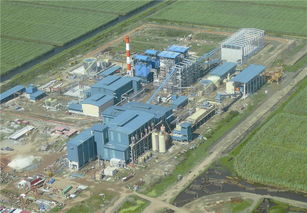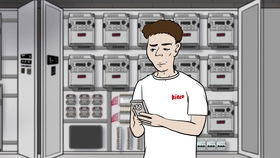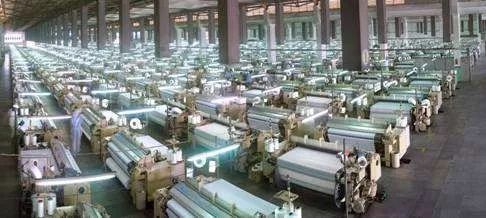Nigerias Textile Industry:Current Status,Challenges,and Future Outlook
The textile industry in Nigeria is one of the most dynamic sectors in the country, contributing significantly to its GDP and job creation. Currently, Nigeria's textile industry faces several challenges such as high production costs due to raw material shortages and lack of skilled labor, limited access to modern technology, and a weak regulatory framework that hinders growth. The sector also faces environmental and social concerns due to over-dependence on traditional manufacturing methods, which contribute to pollution and poor working conditions. Despite these challenges, the industry has great potential for expansion and innovation. As the economy continues to diversify, there is a growing demand for sustainable and eco-friendly textile products. Additionally, with increased international trade opportunities, Nigeria's textile industry can tap into new markets and gain competitive advantage through technological advancements and branding. Overall, while Nigeria's textile industry faces significant challenges, it also presents exciting opportunities for growth and development.
Introduction: The Nigerian textile industry, one of Africa's largest industries, is a crucial sector that contributes significantly to the nation's economy and employment. It plays a vital role in providing job opportunities, generating income, and enhancing foreign exchange earnings. However, with advancements in technology and global competition, the industry has faced challenges and needs to evolve to remain relevant in the modern era. This essay will provide an overview of the current state of Nigerian textiles, highlighting its strengths, weaknesses, and future prospects.
Strengths:
-
Diverse Product Offerings: Nigeria's textile industry is known for its diverse range of products, including woven fabrics, knitted fabrics, carpets, and garments. These products cater to different markets worldwide, from high-end luxury goods to affordable basic clothing.
-
Infrastructure Development: The government's commitment to infrastructure development has led to the establishment of several factories and mills across the country, providing a platform for local producers to compete with international players.

-
Export Potential: Nigeria's textiles have significant export potential due to their low cost and competitive prices compared to imports from developed nations. The country's exports include fabrics, yarns, and garments that are sold globally.
Weaknesses:
-
Lack of Technological Advancement: Despite its potential, the textile industry in Nigeria lags behind some of its competitors in terms of technological advancements. This lack of innovation has resulted in lower quality products that fail to meet international standards.
-
Inadequate Investment: The textile industry has received limited investment, resulting in a shortage of capital for innovation, research, and development. As a result, there is a need for more private investments and partnerships between the government and private sectors.
-
High Costs of Production: The high costs of production in Nigeria, including raw material costs and labor, make it difficult for the industry to compete with cheaper alternatives. The industry must find ways to reduce costs and increase productivity to stay competitive.
-
Government Regulations: The Nigerian government's regulatory environment can hinder the growth of the textile industry. There are often bureaucratic delays and high taxes that discourage investors from entering the industry.
Case Study: One example of how the Nigerian textile industry is adapting to the challenges it faces is the rise of the "Made in Nigeria" brand. The "Made in Nigeria" initiative was launched by the Nigerian government in collaboration with private sector partners to promote locally produced textiles. The program aims to boost domestic production while reducing dependency on imported materials and machinery. By offering incentives such as tax breaks and subsidies, the initiative has encouraged many small-scale manufacturers to invest in local textile production.
Future Outlook: Looking ahead, the Nigerian textile industry faces several opportunities to grow and overcome its shortcomings. One of the key areas for improvement involves investing in technology to enhance product quality and production efficiency. Additionally, promoting sustainable practices and adopting greener production methods will become increasingly important as consumers demand environmentally friendly products.
Another way forward is through partnerships with other industries and governments around the world. By collaborating with other African countries and international partners, Nigeria's textile industry can expand its market reach and access new markets.
Finally, strengthening regulations and streamlining processes will help attract investment and boost productivity in the industry. The government can also play a role in creating favorable policies and regulations that support the growth of the textile industry.
Conclusion: In conclusion, Nigeria's textile industry is a valuable part of the country's economy and provides significant employment opportunities. While it faces challenges such as lack of technological advancement, inadequate investment, high costs of production, and government regulations, these can be addressed through innovative solutions and collaborative efforts. With proper management and investment, Nigeria's textile industry has the potential to thrive in the future, contributing to its economic growth and global competitiveness.
尼日利亚作为非洲大陆的重要国家,其纺织业在全球市场中占有重要地位,近年来,随着经济的快速发展和人民生活水平的提高,尼日利亚的纺织品行业也呈现出新的发展态势,本篇文章将通过图表和案例分析,全面介绍尼日利亚纺织品现状,并为读者提供相关背景信息。

尼日利亚纺织品现状概述
纺织业规模与产业结构
尼日利亚的纺织业规模庞大,涵盖了棉纺织、毛纺织、丝绸织造等多个领域,近年来,随着技术的进步和消费者需求的多样化,尼日利亚的纺织品产业结构也在不断优化。
纺织产品种类与市场分布
尼日利亚的纺织品产品种类繁多,包括内衣、外套、床上用品、毛巾、纱线等,市场分布广泛,主要销往欧美等发达国家,同时也出口到非洲其他国家。
纺织业面临的挑战与机遇
尽管尼日利亚的纺织品行业面临一些挑战,如生产成本高、技术含量低、市场竞争激烈等,但也存在着许多机遇,随着环保意识的提高,绿色纺织品的需求不断增加,为纺织业带来了新的发展机遇。
案例分析
以某尼日利亚地区为例,介绍纺织品行业的具体情况。
棉纺织业发展情况
该地区棉纺织业近年来发展迅速,主要生产高品质的棉纱线和棉布,采用先进的纺织技术,提高产品质量和产量,该地区还注重环保和可持续发展,推广绿色纺织技术。
丝绸织造业发展情况
该地区丝绸织造业也取得了显著的发展,随着消费者对丝绸制品的需求不断增加,该地区丝绸织造企业不断创新和改进生产工艺,提高产品质量和附加值。

图表说明
以下是关于尼日利亚纺织品现状的一些图表说明:
(请在此处插入图表)
英文案例说明
在英文中,我们可以使用表格来详细说明尼日利亚纺织品行业的具体情况,以下是一个可能的英文案例说明:
Case Study: Nigerian Textile Industry
Industry Overview
Nigerian Textile Industry is one of the largest in Africa, with a wide range of textile products including cotton textiles, woolen textiles, silk weaving, etc. The industry has seen rapid growth in recent years due to economic development and increasing consumer demand for quality textiles.
Product Types and Market Distribution
Nigerian textiles are mainly sold in developed countries such as Europe and the United States, as well as other African countries. The market for textiles is diversified, with demand for various types of textiles such as underwear, coats, bedding, towels, and yarn.
Challenges and Opportunities in the Industry
Despite challenges such as high production costs, low technological content, and competitive markets, there are also many opportunities in the Nigerian textile industry. For example, as consumers become more aware of environmental issues, there is a growing demand for green textiles, providing new opportunities for the industry to grow and develop. In addition, technological advancements in the industry are also creating new opportunities for innovation and growth.
Articles related to the knowledge points of this article:
Exploring the Artisanal Spirit of Yixing,Chinas Quiet Textile Capital



